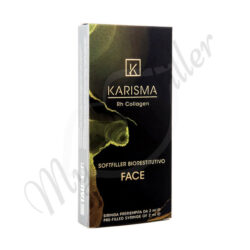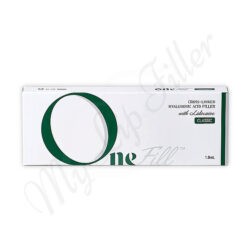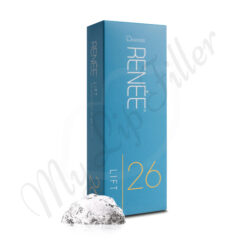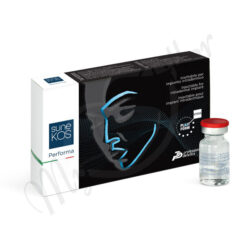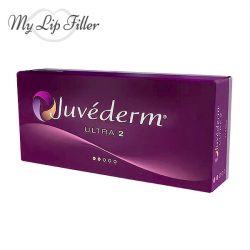Wrinkles and lines in the forehead area are very specific when compared to skin depressions that form on the rest of the face. The constant movement of the eyebrows up and down causes the skin to fold and over time (and with age) form long and noticeable horizontal lines. Additionally, the between the two eyebrows is prone to forming, the so-called glabellar or frown lines, which is another typical facial expression-related issue, that is usually dealt with using fillers for deep forehead wrinkles.
Interestingly, this is one of the areas of the face, which can be treated with all three general types of fillers, which are typically offered on the market:
- Soft filler – in the initial stages of line and wrinkle formation on the forehead, using low-density Hyaluronic gel is usually the correct approach, as there aren’t many tissues below the skin, in this part of the face. While the skin depressions are still relatively shallow, a softer solution, will ensure that there aren’t visible bumps that form on the forehead or between the eyebrows. High flowability of the fillers is key, in this case. Soft HA gel also dissolves quickly and helps to hydrate the skin.
- Deep filler – usually recommended for people beyond the age of 30, as around this age, glabellar and forehead lines and wrinkles start to become more and more pronounced. Modern lifestyle is often related to fatigue and stress, both of which can amplify the process of deepening wrinkles.
- Dense filler – most often used for people who are in their 50s and above. At this point in life, the aged skin usually has formed very deep horizontal lines and obvious frown lines. Processes of skin sagging are also possible. In such a scenario, the stability of the gel fillers is paramount and a dense filler for deep forehead wrinkles is the way to go, in order to provide a deep filling effect in the SubQ layer and lift sagging tissues, as well.
Filler for Deep Forehead Wrinkles
Most parts of the face will require specific viscoelasticity of a product – Crow’s feet need a soft gel; lips will usually be enhanced with a medium-thickness filler and contouring is mostly done with dense fillers. When it comes to the forehead, though, there is a noticeable gradation in the density of the Hyaluronic gel that is used, which is directly related to the person’s age and the overall condition of their skin.
Thus, it isn’t surprising that it is usually deep and severe forehead wrinkles, lines, and folds, which are mostly treated with HA gel. Often, one would deal with superficial wrinkles using alternative methods like mesotherapy or toxin treatment, perhaps lifting threads, once they become deeper. But at a certain stage, regaining a youthful look will mean applying dense fillers to the folds, wrinkles, and overall depressions.
An exception to the above is the temple area which, regardless of the age of the person, is normally corrected with a thick filler, however, such procedures are normally mostly related to facial contouring, rather than specific skin treatment, filling, and lifting.
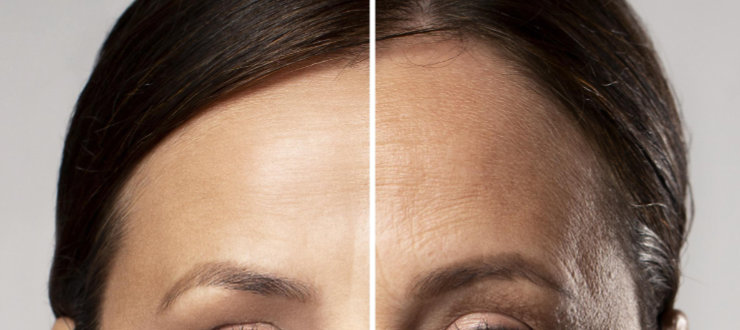
Professional Guidance on Fillers for Deep Forehead Wrinkles
Deep forehead wrinkles can be a challenge, reflecting years of expressions and emotions. As a cosmetologist, my advice for those considering fillers for deep forehead wrinkles emphasizes the importance of a customized treatment plan. Deep wrinkles require a strategic approach that combines the right type of filler with expert procedural techniques to achieve a smooth, natural look without compromising facial expressions.
For deep forehead wrinkles, a denser filler may be required to effectively fill and smooth the area. However, the choice of filler should not only be based on its density but also on how well it integrates with the skin’s natural structure. Products such as hyaluronic acid-based fillers can offer durable results, but the key is in the application. The filler must be carefully placed at the appropriate depth to achieve the desired effect while maintaining a natural look and feel.
Selecting an experienced practitioner is a must. An expert with a deep understanding of facial anatomy and experience in treating similar cases will ensure that the treatment enhances your natural features. During your consultation, discuss the expected outcomes, the longevity of the filler, and any necessary maintenance treatments to keep your results looking their best.
Remember, the goal of using fillers for deep forehead wrinkles is not only to reduce the depth of these lines but also to restore a more youthful and relaxed expression to your face, as a whole. With the right approach and professional care, fillers can provide a significant improvement, allowing you to age gracefully and confidently.
Showing 1–12 of 31 results
-

A-Jax Keen Cozy (1 x 1.1ml)
$41.00 Add to cart -

Aquanex HA Skinbooster (1 x 2.5ml)
$29.00 Add to cart -

Ejal 40 (1 x 2ml)
$59.00 Add to cart -
Sale!

Elasty F Double Filler (2 x 1ml)
Original price was: $79.00.$75.05Current price is: $75.05. Add to cart -

Karisma RH Collagen Filler (1 x 2ml)
$141.00 Add to cart -

Linerase Hydro (5 x 5ml)
$112.00 Add to cart -

OneFill Classic (1 x 1ml)
$45.00 Add to cart -

RENÉE Lift (2 x 1ml)
$128.00 Add to cart -

RENÉE Touch (2 x 1ml)
$128.00 Add to cart -

Sunekos Performa (2 x 3.5ml) Skinbooster
$107.00 Add to cart -
Sale!

Glowing Fill New (1 x 1ml) – Dual Pack
Original price was: $79.00.$75.05Current price is: $75.05. Add to cart -

Juvederm Ultra 2 (2 x 0.55ml)
$165.00 Read more





